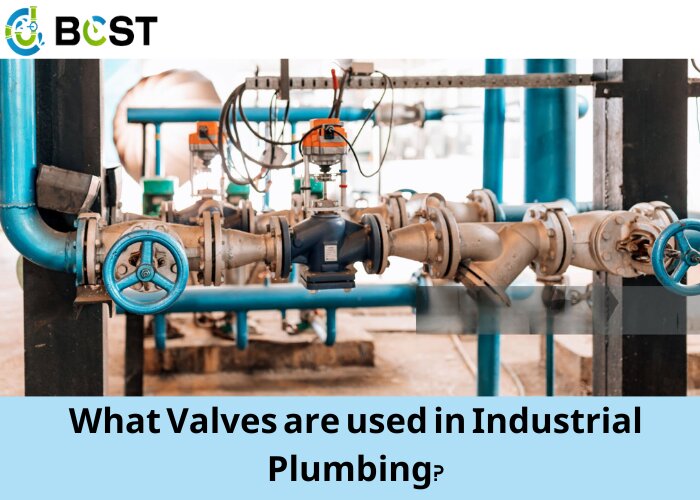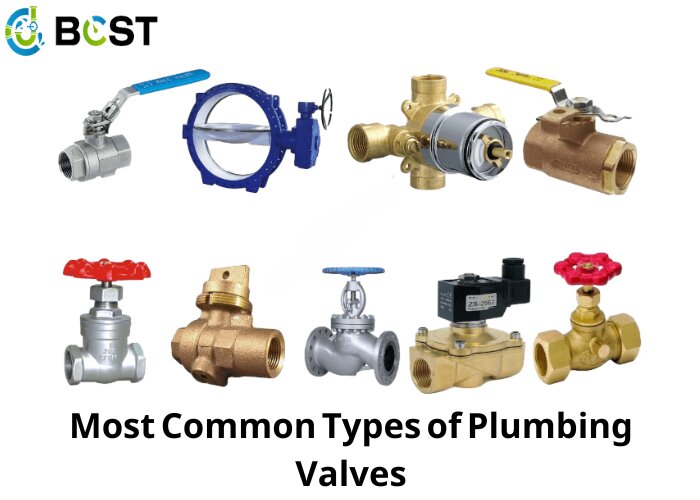


Often overlooked but indispensable, valves play a pivotal role in regulating, directing, and controlling the lifeblood of industrial processes.
Valves are an essential component of any plumbing system since they regulate flow, change flow, and shut off water in an emergency. Valves can be utilized in both residential and commercial plumbing systems.
Large-scale industrial plumbing systems frequently necessitate dependable control solutions. This is because industrial operations are based on production formulas that require inputs to be delivered in precise proportions. This is where industrial valves come into play.
Plumbing Valves are devices that regulate, control, or guide the flow of fluid by partially opening, closing, or obstructing it. A hydraulic device is a device that regulates fluid pressure and flow in a system. It essentially controls pressure and flow.

Ball valves are a popular form of valve that is highly dependable. They are frequently used in residential and industrial applications to turn on and off water without lowering pressure.
Because they are more dependable and user-friendly, ball valves are more commonly used in household plumbing than gate valves.
Ball valves are solid and efficient, able to resist high pressure and high flow rates without harm.
They are easily clogged if particles or matter get caught in the ball core.
Gate valves are another common form of plumbing valve that the gate valve supplier often prefers. The gate valve has a wedge-shaped metal gate that can be lowered to stop the flow of water and raised to restore the flow of water. When the gate is fully brought up into the valve, it pulls back completely, enabling water to pass through with no pressure drop.
Gate valves, one of the most common domestic water valves, may be utilized as main cut-off valves, hot water tank valves, isolation valves, and more.
The valve’s progressive opening and closing adjusts the water pressure, insulating the pipe from the hammering sound of fluid mechanics.
The valve can only be raised and lowered manually, which can be time-consuming.
This valve type is exceptionally light and small, takes up little space, and readily operates by hand. Butterfly valve suppliers prefer this valve since it comes in various configurations, such as flanged ends, wafer type ends, double offset butterfly valves, triple offset butterfly valves, zero offset butterfly valves, lug type ends, etc.
Due to their massive size, butterfly valves are best suited for institutional, commercial, and industrial plumbing. They are rarely used for common household applications.
Butterfly valves are less expensive and lighter than ball valves.
Butterfly valves rely on a gasket, which must be replaced over time.
The globe valves are another common plumbing valve. It is named a globe valve for its globe-like form. There are several types, including angle types, Y and Z types.
Globe valves are a feasible substitute for gate valves for larger home plumbing networks and are best utilized to assist in eliminating water hammer concerns.
Globe valves are utilized when the flow must be modified regularly but do not need to be entirely open.
Since the baffle inhibits the flow, globe valves can’t be operated when entirely open.
When embarking on the journey of purchasing a plumbing valve, several crucial factors should be taken into consideration to ensure a seamless integration into your plumbing system. First and foremost, understanding the valve’s specific application and intended use is essential. Different valves serve distinct purposes: controlling flow, regulating pressure, or diverting liquids.
Valve Operation: While 2-way valves are great for on/off regulation in a system, 3-way valves can be used for both on/off control as well as redirecting or mixing fluids.
Requirements for Upkeep: If frequent maintenance is required, ball valves are an excellent choice since they resist blockage and are one of the most accessible valve types to repair.
Media Type: The qualities of the gas or liquid being regulated will dictate the valve material used. Metallic valves should be used to regulate pressurized gasses for the best level of safety.
Material: Material durability is another critical aspect. Assess the environmental conditions and the nature of the substances the valve will come into contact with. Valves crafted from corrosion-resistant materials such as stainless steel or brass often prove to be resilient in demanding industrial settings.
Valve Size: Size matters, quite literally, when it comes to valves. Selecting the right size ensures optimal flow control and prevents inefficiencies or system failures. Compatibility with existing plumbing systems is key, so consider the type of connections required – be it threaded, flanged, or welded – to seamlessly integrate the valve into your setup.
Operating Mechanism: The operating mechanism of the valve should align with your operational needs. Valves come in various types, including ball valves, gate valves, and globe valves, each with its unique mode of operation. Understanding how these mechanisms function and their suitability for your specific requirements is vital.
Maintenance Requirements: Opt for valves with accessible components for easier inspection and repairs, promoting longevity and minimizing downtime. By carefully considering these aspects, you can make an informed decision, ensuring that the plumbing valve you choose not only meets your current needs but also aligns with the future demands of your system.
In conclusion, valves are necessary parts in the industries of the pipe. These humble instruments play a protective role in fluid control, leading to seamlessness in the complex system. from ball valve to gate valve. Each valve has a function that can ensure the accuracy, efficiency, and safety of each industry. As the industry outgoing improves. the technology of the valve is still important and driving the constant quest for higher performance and reliability. In the intricate network of pipes and processes, valves stand as silent sentinels, embodying the essence of control and efficiency in the dynamic world of industrial plumbing.

CONTACT US Professional Automated Valve Manufacturer

BCST your Expert Knife Gate Valve Supplier in China BCST Knife Gate Valve is widely used in urban

BCST your Expert Knife Gate Valve Supplier in China BCST Knife Gate Valve is widely used in urban

BCST your Expert Knife Gate Valve Supplier in China BCST Knife Gate Valve is widely used in urban

BCST your Expert Knife Gate Valve Supplier in China BCST Knife Gate Valve is widely used in urban

BCST your Expert Knife Gate Valve Supplier in China BCST Knife Gate Valve is widely used in urban